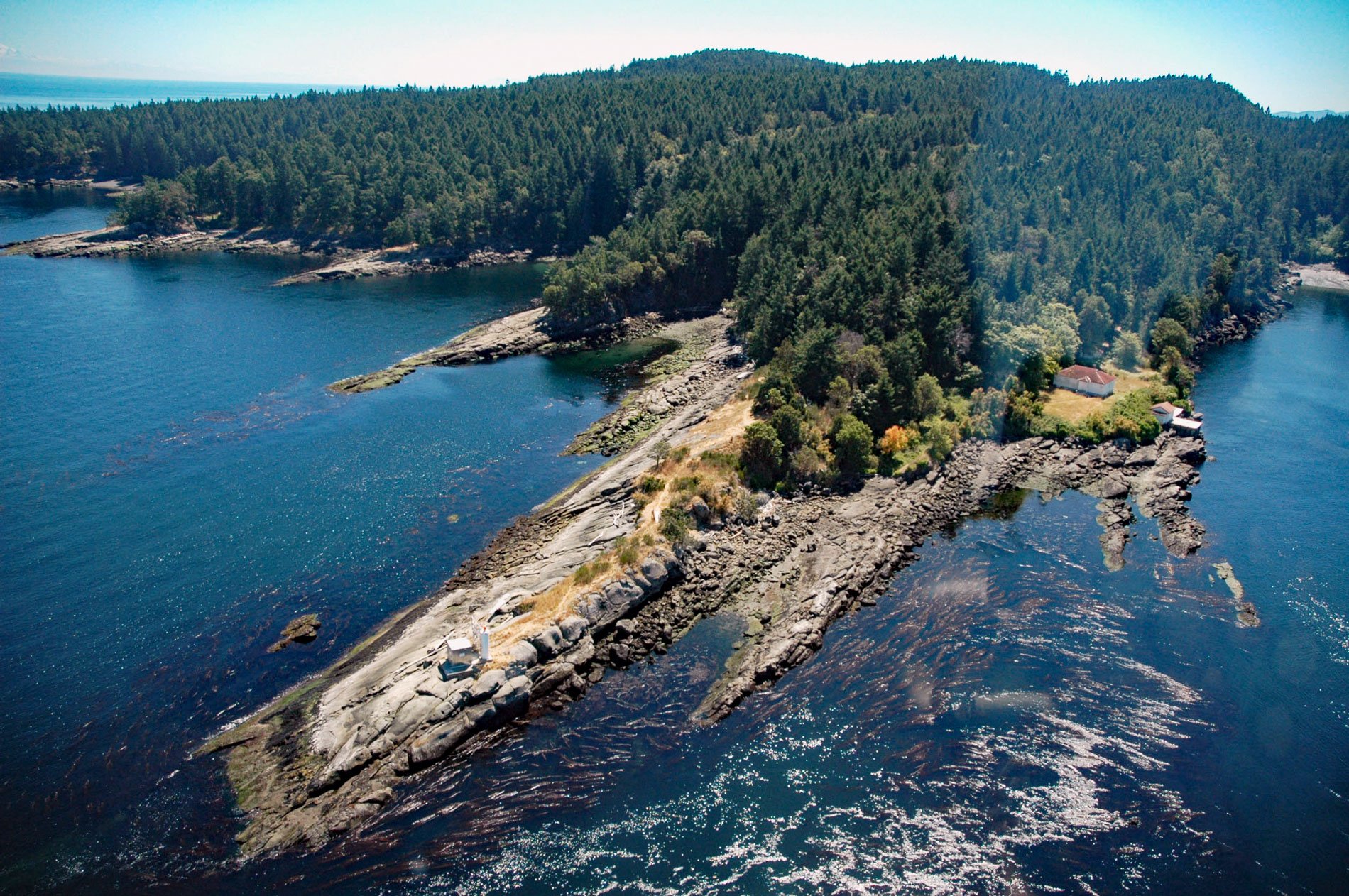Porlier Pass separates Galiano and Valdes Islands in the Southern Gulf Islands of Georgia Strait, about 28 miles (45 km) southwest of Vancouver and 10 miles (16 km) east-northeast of Ladysmith, British Columbia. The pass was named in 1791 by José Maria Narváez, commanding the Spanish schooner Saturnina.
Porlier Pass is about 1 mile long (1.6 km), 0.4 miles (0.6 km) wide, and strewn with submerged rocks. The tidal currents are very strong, often running from 4 to 9 knots (2-5 m/s) creating overfalls and whirling eddies, especially at the northern entrance. Despite the hazards, mariners frequently use Porlier Pass, especially when transiting between Ladysmith and Vancouver, since this route is significantly shorter than using Active Pass. In 1901, several ships pilots and masters of steamships petitioned for range lights on the northern end of Galiano Island to guide vessels through Porlier Pass. The beacons were built and put in operation on November 15, 1902. The front range light was a square wooden tower on Race Point, 50 feet (15 m) from the water’s edge, and 6 feet (1.8 m) above high water. The rear range light was located on Virago Point, the first point southwest of Race Point. This tower was also square with a height of 31 feet (9.5 m). The station was automated in 1996, and the front light tower on Race Point was replaced with a cylindrical fiberglass tower.
Virago Rock is located in the center of Porlier Pass and is the final resting place of the steel steam tug Point Grey. The tug ran aground in 1949 and remained perched on the rock until the early 1960’s when it rolled over and sank. At the northeastern entrance to Porlier Pass, next to Canoe Islet, lies the steam side-wheel schooner Del Norte, of 197 feet (60 m), which ran onto the reef and sank in 1868. In 1972, the Del Norte was declared a protected Heritage Site by the British Columbia government. The wooden hull has long since disappeared but the boilers, paddlewheels, and engines remain. Read more here and here. Explore more of Porlier Pass here:

